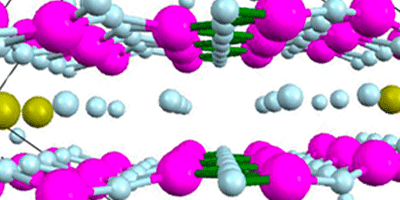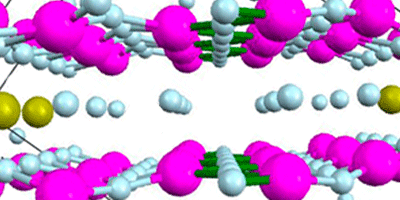Giant Nernst Effect in a 1D Metal
When a conductor in the presence of a perpendicular magnetic field is subjected to a temperature gradient in one direction, an electric field develops in the third direction. The size of this so-called Nernst effect is characterized by the Nernst coefficient, which is typically related to the ratio of the mobility of charge carriers to the Fermi energy. Materials with a large Nernst coefficient are excellent candidates for cryogenic refrigeration since, in combination with an electric current and a perpendicular magnetic field, they can be used to control the flow of heat.
The Nernst effect has been known since its discovery in the semimetal bismuth, which, along with graphite, has one of the highest Nernst coefficients. In a paper appearing in Physical Review Letters, Joshua Cohn from the University of Miami, Florida, and his colleagues have found a Nernst coefficient rivaling that of bismuth and graphite in single crystals of , a quasi-one-dimensional material also known as lithium purple bronze. Conduction in the material occurs along one-dimensional channels with carriers of both signs. However, neither the mobility is very high, nor the Fermi energy too low, upending the conventional pathway for achieving high Nernst coefficients. Cohn et al. identify phonon drag—the interaction of a nonequilibrium gas of phonons with charge carriers—as one of the possible mechanisms, although a full picture is likely to involve the effects resulting from the low dimensionality of the electrons and the lattice. These findings expand the range of viable materials for thermomagnetic cooling and challenge the fundamental understanding of electronic properties of metals. – Sarma Kancharla





